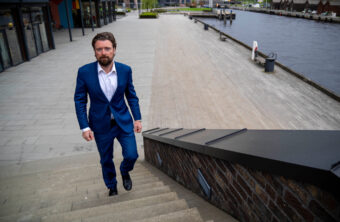
In the autumn of 2019, Mayor of Helsinki Jan Vapaavuori called for the establishment of a working group to prepare an analysis of the future of transit in the City of Helsinki. This analysis is now complete and the working group has published its report. The results will be used in the strategic development of the city’s transport system. The work relied extensively on a wide range of expertise from the municipality, specialists in the field, international research and Helsinki’s collaborative partners in the World Economic Forum and Bloomberg Philanthropies.
“The future of urban mobility is one of the central themes of global city discussions. Helsinki wants to be a forerunner in anticipating different development paths in this evolution. In this respect, our city’s analysis of the future of urban transport is an important contribution, as it emphasises a broad mobility ecosystem. In future, the role of cities will evolve from a builder of transport infrastructure to a platform for the development of a mobility ecosystem as new forms of transport emerge. It is essential that we take this into account in our city planning,” says Helsinki Mayor Jan Vapaavuori.The mayor says that it is becoming clear that digitalisation, in addition to the transport data and new technologies accumulated through it, will soon require cities to redefine their roles.
“The city must build a functioning mobility ecosystem by putting clear game rules in place and acting in a predictable, persistent manner. At the same time, we have to keep in mind that future transport will be the sum of several different options above and under the ground and in the air and at sea,” Vapaavuori says.
Building scenarios for the future of mobility
The analysis of future transport in Helsinki relied on scenario work. The first phase identified variables that were relatively certain and already have a large impact on traffic in Finland’s capital. Climate change, traffic electrification, urbanisation, an aging population and the changing nature of work were selected as variables that were seen as constants.
The next phase recognised critical factors that could potentially have a big impact on Helsinki traffic, but whose realisation, direction and magnitude are still uncertain. Transit automation, the use of mobility services and vehicle ownership, openness of data and ownership of data infrastructures were determined to be such critical factors.
This work resulted in three possible urban transport scenarios.
City transport driven by mega corporations
Scenario A is known as “Integrated market-driven” and is based on automated solutions run by global companies. In this scenario, the transport services market would be dominated by a few mega corporations that serve as Mobility as a Service (MaaS) operators. More than half of Helsinki’s motor vehicle stock would be highly automated and in continuous use, as the fleet of cars transitions into shared use. Rail traffic would be the backbone of the public transport system, transporting large streams of people between the different regional hubs.
The risk in this scenario is increased regional segregation in service levels. An automated transport system developed by commercially-motivated mega corporations could, once it gains a strong foothold in the market, begin to challenge services provided by public operators by offering aggressively-priced shared transport alternatives along trunk routes.
Breakthrough of automated vehicles
Scenario B is called “Private autonomy” and centres around the premise that the city’s traffic strongly relies on privately-owned automated vehicles. In this scenario, car manufacturers have overhauled their production in the span of a few decades and the price of electric automated cars has been falling for years, making various mobility services and public transport unable to complete.
About half of households in the city own a motorised vehicle and transport has been become easier because parking and driving has been automated. User data is the property of the auto manufacturers and is not widely used to optimise traffic systems. Unexpected congestion still springs up from time to time when individual vehicles attempt to optimise their routes. In this scenario, user data is strictly controlled by the car manufacturers and vehicle owners.
Open and accessible traffic data
Scenario C, the third option, is named “Open and shared”. In this scenario, local service providers operate on the basis of shared data. System automation has proceeded more slowly in this case than in the other scenarios. Without a driver in the vehicles, the high-level automation applications have not proven sufficiently safe in the open, complex urban environment. All data is open and available for anyone to utilise. These circumstances have led to the rise of local service providers.
Longer everyday trips in scenario C are conducted by rail or car, but shorter trips and park-and-ride trips are made by walking, using city bikes or other micro-mobility services. An AI-based guide will assist consumers by offering different options, based on their preferences and needs. The price of transport services are high, but so is the quality of service and the attractiveness of the urban environment.
Cities must facilitate open competition
”Based on the results of this work, it can be concluded that the city should facilitate open competition between companies and take steps to avoid the creation of monopolies. The city should build a functioning mobility ecosystem by drawing up clear game rules and acting in a predictable, persistent manner while allowing the market to produce feasible solutions,” says Reetta Putkonen, Helsinki’s director of transport and traffic planning.
The Analysis of future transport in the City of Helsinki is available to read on the city’s website:
For additional information, please contact:
Transport and traffic planning director Reetta Putkonen, tel. +358 9 310 37079
Strategic initiatives director Sanna-Mari Jäntti, tel. +358 9 310 20015




